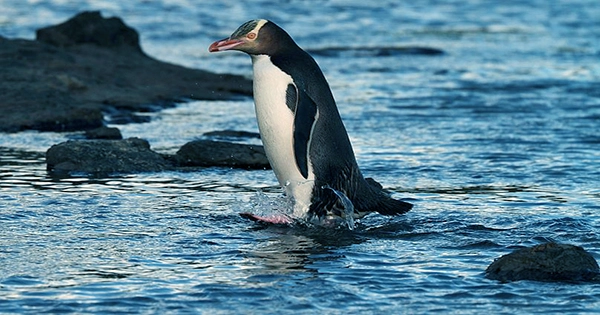Two new penguin species that inhabited (or waddled) the Earth more than 50 million years ago were discovered by a team of international scientists as they dug through the beachy boulders of New Zealand’s South Island.
Very importantly, though, is that one of the penguins, known as Kumimanu Fordyce, is most likely the largest animal to have ever lived. A co-author of research on the discovery that was published in the Journal of Paleontology on Wednesday had a pretty good way to explain it.
At about 350 pounds, it would have been heavier than Shaquille O’Neal at the height of his power in basketball. Daniel Field from Cambridge University stated in a statement. According to a press release, emperor penguins, the biggest penguins currently living, can weigh up to 100 pounds (45 kilograms). The heaviest bird currently alive, the male ostrich, may weigh up to 290 pounds.
The study’s first author, Daniel Ksepka of Connecticut’s Bruce Museum, tweeted a picture of the team’s “best prediction” for the height of an ancient (and potentially dominant) penguin. Thankfully, it appears to be far smaller than the giant penguin that paleontologist Dougal Dixon prophesied would live on Earth after humans in 1981. It appears to be approximately the size of a human (if not greater). Dixon pictured a 12-meter (almost 40-foot) monstrosity. Yikes.
Petradyptes Stonehouse, the other species, made up five of the nine individuals found, although the researchers believe it was no bigger than a contemporary emperor penguin. It measured roughly 110 pounds (50 kilograms).
Together, the two novel species have shown to researchers that penguins grew to enormous sizes early in their evolutionary history. Additionally, the discovery provides insight into how the flippers of these flightless birds evolved over time.
According to Field, fossils give us information about the evolution of life, and occasionally this information is genuinely startling. Many of the earliest extinct penguins grew to tremendous sizes, easily dwarfing the biggest penguins still alive.
Mega penguin analysis
The scientists employed methods including laser scanning and environmental analysis to assess various elements of the two extreme species, focusing on the penguin’s prominent flippers.
In order to compare the bones to those of other fossil species, such as the emperor penguin, the scientists first used laser scanners to generate digital replicas of the bones. The researchers began estimating the size of the prehistoric birds based on this. Examining the stones within which all the items, including flipper bones and muscle attachment points, were initially discovered also revealed some information.
The age of the rocks was determined to be 57 million years, and it is believed that the fossil species existed between 59.5 million and 55.5 million years ago.
The time period covered by this timeline covers the late Paleocene, more particularly, 5 to 10 million years following the end-Cretaceous extinction, when the dinosaurs were wiped off by the asteroid Chicxulub. This suggests that the enormous penguin may have lived in greater tranquility than you might anticipate for such an ancient creature, unperturbed by the presence of dinosaurs, for example.
Kumimanu fordycei is one of the most remarkable fossil birds ever discovered, according to Field. “Kumimanu fordycei would have been an absolutely astounding sight on the shores of New Zealand 57 million years ago,” he added.
And the answer to the question of whether a large penguin’s lifestyle is different from the routines of the small penguins we are accustomed to is definitely yes.
For instance, a larger penguin might be able to catch greater prey, maintain body temperature better in frigid seas, and possibly move across the globe and establish houses outside of their home range, according to the experts.
The dinosaurs, wooly mammoths, and even this dog-sized scorpion appear to have been far larger than their modern-day predecessors in the distant past. According to some scientists, this is due to environmental variables including the air’s higher oxygen concentration. Some people think it might have been due to efficient food absorption, as the penguin discovery team suggests.
“Currently existing large warm-blooded marine species are capable of diving to considerable depths. By being able to explore deeper seas and acquire food that isn’t available to live penguins, Kumimanu fordycei may have had a different ecosystem from penguins today “The study’s co-author and professor at Massey University, Daniel Thomas, said in a release.
Kumimanu fordycei, the name of the recently discovered enormous species, was given in honor of Ewan Fordyce, a retired professor at the University of Otago in New Zealand. It is only fitting that Ewan should have his own penguin namesake, according to Ksepka, who stated in a statement that without Ewan’s field program, we would not even be aware that many classic fossil species existed.
The name of the smaller discovery, Petradyptes stonehousei, is much more literal. It comes from the Greek words “petra,” which means rock, and “types,” which means diver. However, Stonehousi pays tribute to the late Bernard Stonehouse, who according to a press statement was the first to see the entire emperor penguin breeding cycle.















